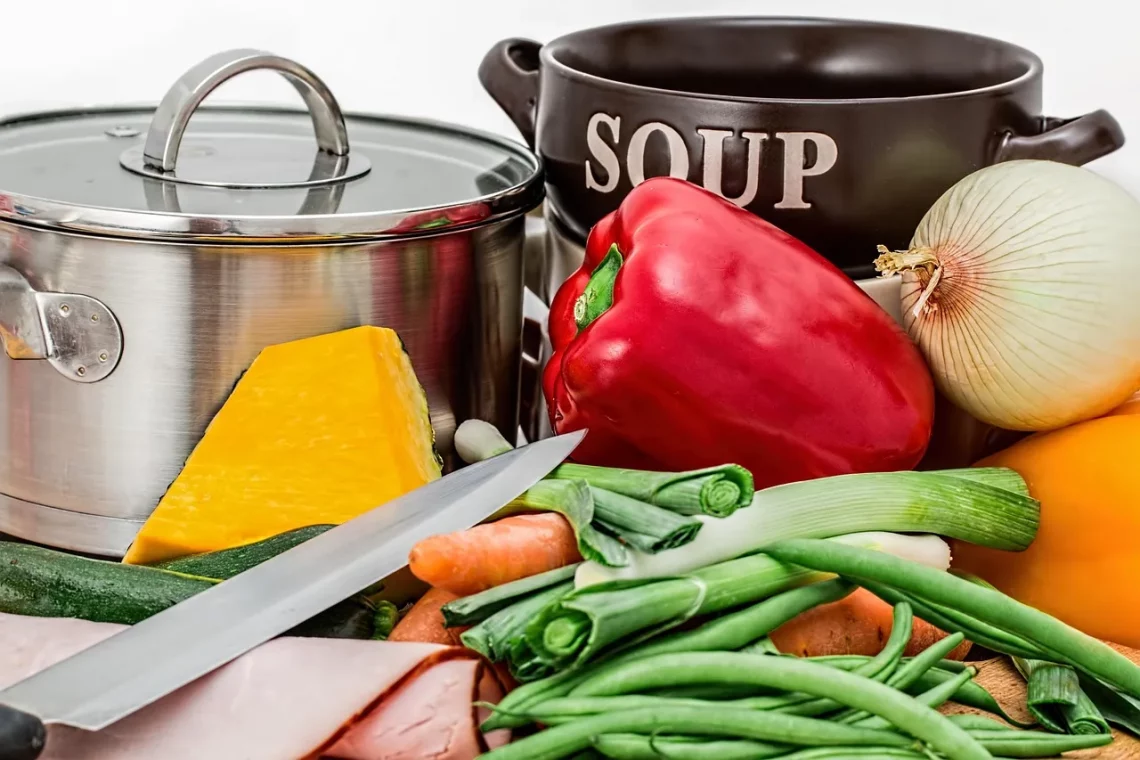
Mastering the Art of Cooking: Insights from a WH Chef
Cooking is not merely a skill; it is an art form that has been cherished and refined through generations. Whether it’s a home-cooked meal shared with loved ones or an intricate dish presented in a fine dining restaurant, the act of cooking carries with it a tapestry of emotions, memories, and culture. The ability to transform simple ingredients into delicious meals requires not only technical skills but also creativity and passion.
For those who aspire to elevate their culinary skills, understanding the nuances of cooking is essential. Professional chefs, particularly those who have honed their craft in prestigious kitchens, often possess insights that can significantly enhance one’s cooking journey. From mastering basic techniques to exploring complex flavor profiles, the path to becoming a proficient cook can be both challenging and rewarding.
In a world where culinary trends are ever-evolving, the wisdom shared by experienced chefs serves as a valuable resource. By delving into their experiences and philosophies, aspiring home cooks can gain a deeper appreciation for the culinary arts and discover the joy of creating memorable dishes. This exploration of cooking transcends the kitchen, inviting individuals to embrace the process, experiment, and ultimately, find their unique culinary voice.
Understanding Culinary Techniques
The foundation of great cooking lies in mastering essential culinary techniques. These techniques form the backbone of any dish, allowing chefs to manipulate ingredients in ways that enhance flavor and presentation. From chopping and sautéing to poaching and braising, each method has its own unique set of skills and applications.
One of the most fundamental techniques is knife skills. Knowing how to properly hold and use a knife can greatly improve efficiency and safety in the kitchen. It’s important to practice different cuts, such as julienne, dice, and chiffonade, as each cut can affect the dish’s cooking time and texture. A well-chopped onion will cook more evenly than one that is roughly diced, leading to a more harmonious flavor profile in the final dish.
Another essential technique is the art of sautéing. This method involves cooking food quickly in a small amount of fat over high heat. Sautéing can bring out the natural sugars in vegetables, creating a depth of flavor that is hard to achieve through other cooking methods. Understanding how to control heat and timing is crucial; too high, and food can burn, too low, and it may become soggy.
Braising, on the other hand, is a slow-cooking technique that combines moisture and heat to tenderize tougher cuts of meat. This method requires patience, but the results are well worth the wait. The key is to sear the meat first to develop a rich flavor, then slowly cook it in a flavorful liquid. The result is a dish that is not only delicious but also showcases the transformative power of cooking.
Mastering these techniques allows cooks to express their creativity. Once the basics are understood, it becomes easier to experiment with flavors and presentation. A cook who can confidently use these methods will find that their culinary repertoire expands, leading to more complex and satisfying dishes.
The Importance of Ingredients
In the culinary world, the phrase “you are only as good as your ingredients” rings true. High-quality ingredients can elevate a dish from ordinary to extraordinary. Understanding how to select, store, and use ingredients is crucial for any cook who wishes to create exceptional meals.
Freshness is key when it comes to produce. Seasonal fruits and vegetables not only taste better but also offer more nutrients. Visiting local farmers’ markets can provide access to a variety of fresh produce, allowing for a greater range of flavors and textures in cooking. Additionally, knowing how to properly store these ingredients can extend their shelf life and maintain their quality. For instance, leafy greens should be kept in a breathable container to avoid wilting, while tomatoes should never be refrigerated, as it can alter their flavor and texture.
When it comes to proteins, sourcing high-quality meat and seafood can make a significant difference. Sustainable and ethically sourced options not only taste better but are also better for the environment. Understanding different types of meat cuts and their best cooking methods can enhance the overall dining experience. For example, knowing that a ribeye steak benefits from high-heat grilling while a brisket requires low, slow cooking can lead to better results.
Spices and herbs, often overlooked, are crucial for flavor development. Fresh herbs can brighten a dish, while dried spices can add depth and warmth. Understanding the balance of flavors is essential; a well-seasoned dish can transform simple ingredients into a culinary masterpiece. Learning about the origins and profiles of different spices can also inspire creativity in the kitchen.
Ultimately, the journey of mastering cooking is not just about the end result but also about the respect and care given to the ingredients. Building relationships with local suppliers and understanding the story behind each ingredient can deepen one’s appreciation for the culinary arts.
Creativity and Experimentation in the Kitchen
Creativity is at the heart of cooking. It allows chefs to take risks, innovate, and express their individuality through food. While mastering techniques and understanding ingredients are essential, the true magic happens when cooks step outside their comfort zones and begin to experiment.
One way to foster creativity is by exploring different cuisines. Each culture has its own unique flavors, techniques, and ingredients, offering a wealth of inspiration. For instance, incorporating Asian spices into traditional Italian dishes can create a delightful fusion that surprises and delights the palate. Experimenting with different cooking methods, such as smoking or fermenting, can also add new dimensions to familiar recipes.
Pairing unexpected flavors can lead to exciting culinary discoveries. The contrast of sweet and savory, for example, can elevate a dish to new heights. Think of the delightful combination of honey and soy sauce in a glaze or the surprising burst of flavor from adding citrus to a rich, creamy sauce. The key is to taste as you go, adjusting and refining until you achieve the desired balance.
Another aspect of creativity is presentation. The visual appeal of a dish can enhance the dining experience, making it as much about the eyes as it is about the palate. Learning about plating techniques can help chefs showcase their culinary creations in a way that invites appreciation. Simple garnishes, thoughtful arrangements, and contrasting colors can all contribute to an aesthetically pleasing plate.
Moreover, keeping a cooking journal can be a valuable tool for budding chefs. Documenting experiments, successes, and failures can provide insight into one’s culinary journey. It allows cooks to reflect on their experiences, learn from mistakes, and build upon their successes.
In the end, the kitchen should be a space of exploration and joy. Embracing creativity and experimentation can lead to personal growth and satisfaction in cooking, making the process as rewarding as the final dish.
The Role of Passion and Dedication
Passion is the driving force behind every successful cook. It fuels the desire to learn, grow, and create. For many chefs, cooking is not just a job; it is a lifelong journey filled with discovery and joy. This passion translates into dedication, which is essential for honing any skill.
Dedication involves practice and perseverance. Like any art form, cooking requires time and effort to master. Aspiring cooks should not be discouraged by failures or setbacks; rather, they should view them as opportunities for growth. Each dish that doesn’t turn out as planned offers valuable lessons that can inform future efforts.
Additionally, seeking feedback from others can be a powerful tool for improvement. Sharing dishes with friends and family and being open to their critiques can provide fresh perspectives and insights. Constructive criticism can help identify areas for improvement and inspire new ideas.
Continuous learning is another vital component of dedication. The culinary world is vast and ever-evolving, with new techniques, trends, and ingredients emerging regularly. Attending cooking classes, reading cookbooks, or watching cooking shows can provide inspiration and knowledge that can enhance one’s skills.
Finally, surrounding oneself with a community of like-minded individuals can foster passion and dedication. Joining cooking clubs or engaging with online culinary forums can provide support, encouragement, and motivation. Sharing experiences and learning from others can invigorate one’s culinary journey, making it even more fulfilling.
In conclusion, mastering the art of cooking is a multifaceted journey that combines technique, creativity, and passion. By understanding culinary methods, valuing ingredients, embracing experimentation, and committing to continuous learning, anyone can elevate their cooking skills and enjoy the beautiful process of creating delicious meals.
**Disclaimer**: This article is for informational purposes only and does not constitute medical advice. Always consult a healthcare professional for any health-related concerns.




